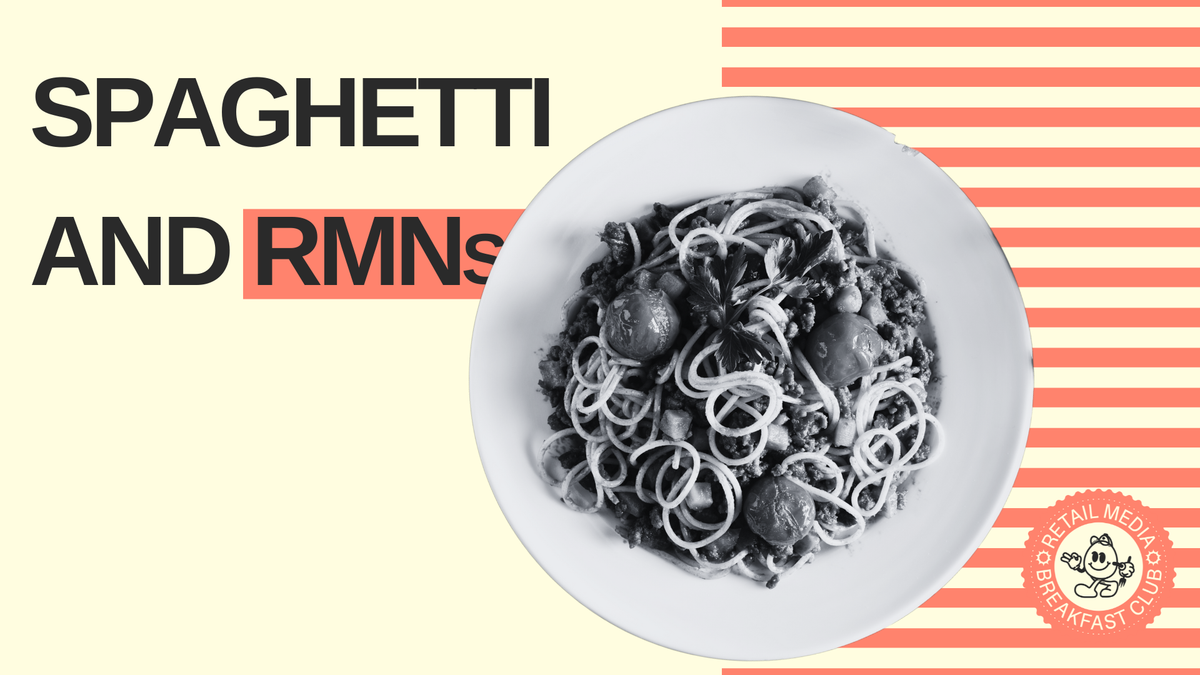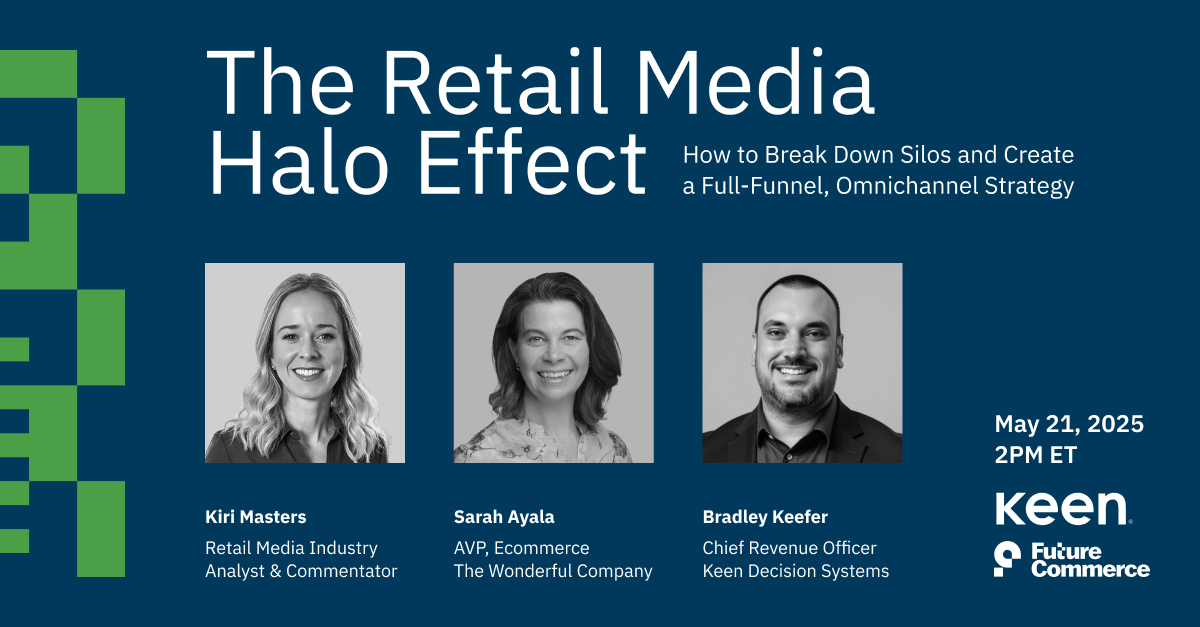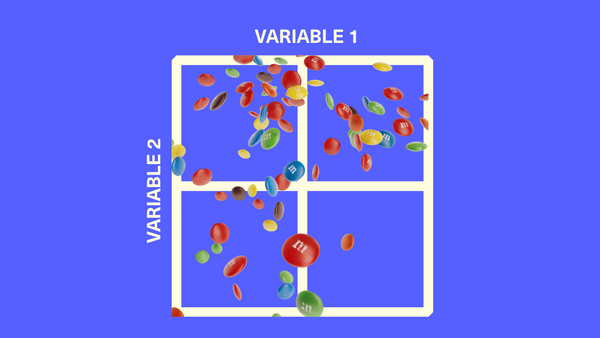Brands demand retail media standards. Retailers say it's too hard. Do they kind of have a point?

Before we begin, if you like today's post, you'll love the webinar I'm part of next week: The Retail Media Halo Effect brought to us by Keen Decision Systems and Future Commerce. Much of my thoughts below came from noodling on the very topics we'll be discussing -- the retail media halo effect, how to break down silos, and create a full funnel omnichannel strategy. Don't miss it! May 21st at 2PM ET, sign up here!

Everyone has their own definition of the perfect bolognese sauce. To parents of young children, its a way to sneak in an extra serve of veggies. Some people play with the ratio of pork to beef. Italian purists demand a splash of milk at the end.
Decisions around what goes into your bolognese sauce and how its prepared may depend on your family history, flavor preferences, or even what type of equipment you have. With all these variables, everyone seems to make their bolognese a bit different.
That's kinda what's happening in retail media networks today. All these retailers offer "retail media," yet the flavor profile and nutritional value are wildly different—with measurement standards as varied as those home-cooked meals.
Brands say they want retail media standards. Retailers say it's too hard. Do they kind of have a point?
The Different Recipes: Why RMNs Operate Differently
Just as every home cook has their own bolognese recipe, every retail media network has developed its own approach to advertising, measurement, and reporting.
This isn’t by design. It stems from fundamental differences in their business models, history, technology infrastructure, and position in the market.
For many smaller RMNs, their tech stack resembles off-the-shelf ingredients—assembling the Kirkland brand of meat with a bottle of Prego sauce. It's technology that gets the job done. But for their regular customers, they offer special-order bolognese (direct ad buys) made exactly how these big spenders want it. These direct buys might generate enough revenue, and align pretty cleanly with the retailer's core business (actually selling stuff), that there's little incentive to pony up the big bucks on infrastructure to significantly improve their standard ‘public’ recipe.
Technical differences abound as well. A new report from Pentaleap (coming out tomorrow) shows significant variation in how effectively retailers can serve sponsored ads for complex search queries. As searches get longer and more specific (and more valuable to brands targeting niche customers), some platforms maintain high ad coverage while others drop off dramatically.
The Diner's Dilemma: Brand Challenges
Brands face the difficult task of navigating a fragmented RMN landscape. As retail media spending growth is expected to decelerate, performance gaps will be even more under the microscope. Brands are already voting with their wallets—on average, they only advertise on 5-6 RMNs, despite dozens being available in each category.
The call for standardization from brands is borne out of two major issues: frustration around transparency, and a desire to compare ‘apples to apples’ and ensure their media dollars are spent in the most performant channel.
On transparency, Jordan Witmer, Managing Director of Retail Media at Nectar First, shared how one major retail network responded when advertisers started identifying and opting out of poor-performing placements based on viewability metrics. Instead of improving these placements, the network simply removed advertisers' ability to select specific placements entirely, forcing them to buy bundled packages that obscured the poor performers.
A few weeks ago I wrote about a Path to Purchase Institute & TransUnion study which revealed just how wide the perceived differences between RMNs have become. The data shows a stark divide between industry leaders and the rest of the pack — and just how dimly brands feel about being able to compare apples to apples.
Top-Tier Networks (Amazon and Walmart):
- 50-70% "Excellent/Very Good" ratings across core metrics
- Strong data transparency (only 14% "Fair/Poor" for Amazon)
- Consistently high ROI satisfaction
Contrast that with the lower tier:
- H-E-B: 60% "Fair/Poor" on measurement
- Dollar General: 57% "Fair/Poor" on measurement, 79% "Fair/Poor" on ROI
- BJ's: 70% "Fair/Poor" in both measurement and ROI
- Albertsons: 65% "Fair/Poor" in data sharing
- Ahold Delhaize: 67% "Fair/Poor" in ROI
The Chef's Challenge: Why Standardization is Difficult
Although brands want to compare “apples to apples”, some retailers are pushing back on the premise of broad standardization.
Melanie Babcock of Home Depot pointed out in an interview I did with her for Forbes that brands might have completely different strategic objectives across different retail partners—especially specialty retailers. "For example, a faucet manufacturer might have 200 SKUs at Home Depot, and only 10 at a mass retailer," she said. "If the brand is testing a new product line or color trend in one retail environment, their return on ad spend (ROAS) might naturally be lower than in a channel where they're only promoting proven bestsellers."
While brands understandably push for greater consistency, retailers face legitimate challenges in standardizing their approaches. The obstacles aren't just stubbornness or profit-seeking—they're rooted in technical limitations, organizational structures, and business realities.
- Legacy Systems Weren't Built for Advertising
Many retail media networks begin as small initiatives within existing departments. Melanie Babcock described how Home Depot's retail media journey began in 2018: "I noticed a lot of retargeting traffic available... I thought, 'I wonder if our suppliers would pay for this, to retarget customers who abandoned their pages.’" Thus kicked off a lucrative business for Home Depot, but one they have also spent the past couple of years attempting to consolidate across offline and online.
This experimental approach is common, with many retail media efforts starting within marketing, e-commerce, or merchandising teams before gaining traction. The downside is that "retail media" often operates separately from corporate marketing, e-commerce, and data science groups, hampering consistent measurement practices.
- Economic Reality Check
The reality is, retailers are at different stages of measurement readiness because their retail media business may be more or less significant to the core business. I heard recently of a regional grocer making "single digit millions" in revenue from selling their data. Is that enough incentive to invest significant capital in upgrading core systems? It may be tough to justify that oversight and capital expense. Meanwhile, hiring another retail media salesperson for direct media buys could be more palatable.
- The Audience Wants Different Dishes
HEB's RMN head, Sean Ransenberg, posted a thoughtful comment on one of my recent articles: "It is going to be extremely difficult for retailers to provide 'standardization' when CPGs aren't in agreement on how they want to measure (retail) media. Internally, various CPG teams have differing preferences on measurement methodologies."
He points out that CPG sales teams want pre-post analysis, while shopper marketing wants closed loop and matched market analysis, and the brand teams want to run a Marketing Mix Model.
The whole table wants bolognese, but one wants gluten-free pasta, one wants the pasta well-cooked while everyone else wants al dente, and the child at the table needs it to be served lukewarm. The ingredients may be the same, but it needs to be customized to their palate.
What can history tell us about the current challenges in retail media?
The kitchen says that the diners are too picky and demanding. And it may be unfair to expect a nutritional label for the meal coming out of the kitchen. But the call for standardization has been borne from experiences where brands have been told, “just trust me” and had their fingers burned.
As retail industry analyst Andrew Lipsman says, "Dollars Follow Measurement."
Only when Facebook moved to a performance medium circa 2012 did the ad dollars really surge.
And between ’06 and ’12, search engines handled their measurement standards differently, sparking a similar standards debate. Ultimately Bing adopted Google-like ad mechanics.
Advertisers crave transparency and were all too happy to shift ad spend, even when that resulted in a near monopoly.
Maybe outcome-first thinking can help
While preparing for an upcoming webinar with FutureCommerce, I heard an interesting perspective from Bradley at Keen Decision Systems that challenged the whole notion of standardization. He argued we should flip the lens and aim for an outcome-first, econometrics-driven measurement approach.
Rather than agonizing over the definitions of impressions or views, start with business outcomes: incremental sales, household penetration, basket size, brand lift. Spend where marginal dollars create the most incremental households or sales, regardless of how the metrics are calculated internally.
That shifts the conversation with RMNs from “Is your pixel MRC-accredited?” to “Prove you beat my next-best dollar on incremental lift.”
Conclusion: Embracing a varied diet
The retail media landscape indicates that parties on both sides are still developing their culinary identities.
For brands, the path forward involves:
- Selective Partnerships: Focus on the RMNs that deliver consistent value for your specific objectives, recognizing that the "recipe" needs to match your personal goals.
- Outcome-Based Evaluation: Instead of waiting for standardization that may never arrive, judge networks by business outcomes rather than getting lost in the weeds of inconsistent metrics.
- Customized Approaches: Adapt strategies to each platform's strengths rather than trying to force identical campaigns across disparate networks.
For retailers, success means:
- Continuous Improvement: Invest in measurement capabilities and transparency, even if perfect standardization isn't feasible.
- Honest Value Proposition: Be clear about what makes your "recipe" unique and valuable, rather than pretending to be something you're not.
The industry will undoubtedly move toward greater standardization over time, just as other digital advertising channels have. But the unique characteristics of retail mean that some degree of difference will always remain.
And perhaps that's not entirely a bad thing. After all, if every bolognese tasted exactly the same, we'd miss out on discovering new flavors and techniques. The same might be true for retail media.





